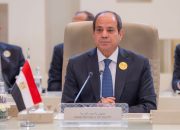Centralinfomationasean.com-22/10/2024-Politic, The politics of memory refers to how political communities articulate, and hence gain recognition of, certain memories
Opinion, The politics of memory refers to how political communities articulate, and hence gain recognition of, certain memories and narratives (Ashplant, Dawson & Roper, 2000: 12). It moves beyond the dichotomy of top-down and bottom-up approaches, as it operates within the intermediate space between the public (the State) and the private (the individual), an arena or socio-political space within which social actors seek recognition of their memories and channel their agency (Ashplant, Dawson & Roper, 2000:12–17). The battle for memory is waged over the meaning and “ownership” of symbols, academic conferences, commemorations, reunions, and rituals, as well as through conventional and new media (Ashplant, Dawson & Roper, 2000; de Brito, González-Enríquez & Aguilar, 2001).
5The politics of memory produces different expressions of memory and positions within society. Bodnar recognises two types of memory expression: official and vernacular (Marschall, 2010).
Official memory is promoted by cultural leaders and authorities at all levels of society, driven by social unity and the attainment of societal and political goals to foster particular interpretations of the past that reduce the power of competing interests (Marschall, 2010:141). In official memory, the state holds the institutional power to influence how citizens remember and forget, often for nation building purposes (McGregor, 2016; Bijl, 2012; Sulistiyanto, 2007; Sturken, 1997; Bargueño, 2012). Meanwhile, vernacular memory is abundant and diverse, propagated by ‘ordinary people’ interested in protecting particular values and memories of their direct experiences with past events or narratives. It is predominantly developed at the local level in small-scale communities (Marschall, 2010: 141), often being created and contested through cultural production and education (Huyssen, 2011).
The term was coined by Alison Landsberg (2008), who defined it as memories that disseminate through (…
Utilising technology, the state can create an official “prosthetic” memory2. Depending on the socio-economic power of the groups who produce and maintain memory, the state may transform official memory into monumental memory, something that is hegemonically produced and maintained through multiple possibilities, from “the word in stone” to the medium of film (Mitchell, 2003: 443).
Censorship can provide a means of buttressing the official memory, being used to dictate the link between society, the filmed event, and its filmic representation (Stora & Stevens, 2007). As history is incorporated into popular culture and information and communication technology, memory can be created through media which allows a moment of the past to exist in the present (such as through biopics or documentary films) and flow freely between groups (Landsberg, 2008).
YouTube has become a new site where people can record, share, exhibit, and retrieve memory, as well as mediatise artefacts over time and space (House & Churchill, 2008). Virtual memorials are able to augment the remembrance experience by cultivating fluid, interactive, and creative spaces that encourage high levels of participation, collaboration, and self-expression (Jones & Gibson, 2012). In the internet era, virtual memory has thus expanded beyond individual persons, spaces, institutions, and nation states, becoming a socio-technical phenomenon—one that is neither entirely social nor entirely technical (House & Churchill, 2008).

Technological features work in tandem with larger cultural contexts. However, they are also subject to medium-specific constraints and thus contribute to the rapid obsolescence and disappearance of historical consciousness; they also tend to serve commercial and entertainment purposes, thereby nurturing a narcissistic amnesia (Haskins, 2007: 406).
Monumentality, thus, can manifest in cyberspace and the information highway, thereby conquering both time and space but it might remain seamlessly connected with the existing traditional monuments (Huyssen, 2003: 47).
Similarly, virtual knowledge on YouTube can result from the colonisation of memory by the private sector and by the developed world; if a memory has no commercial value, no one will bother preserving it. Consequently, vernacular knowledge and minority views—the records of small populations and information perceived as uninteresting and invaluable—are left out of digitisation processes (House & Churchill, 2008).
The inequality of memory within the digital realm has been explored by Markotyrkh (2017:12), who found that YouTube has facilitated the remembrance of traumatic pasts by revealing Soviet, Russian, and Ukrainian interpretation’s of the Battle of Kiev, all of which are inclined to support unilateral perspectives and ignore alternative ones. All though alternative narratives are represented (unequally) on YouTube, Ukrainophone and Russophone user tend to utilise YouTube not to challenge national narratives of the past, but to disseminate and propagate these narratives online (Markotyrkh, 2017). By extension, alternative memories do not necessarily become monumental; official histories can be recreated in and dominate digital realms, receiving massive popularity due to the algoritmas of economic power.
Observing the use of YouTube as a medium, Knudsen & Stage (2012: 432) found that the website enables “democratized memory practice where official justifications of war are disputed and scrutinized via all sorts of discursive and affective investments.”
Such as although global spaces such as YouTube enable the circulation and reproduction of collective memories in de-territorialised and transnational modes, they may also contribute to the strengthening of national, and indeed, nationalist memories (Drinot, 2011). This is exacerbated by the disparate starting points of monumental and vernacular memories.
A Telekom advertisement in Germany, for example, cannot create monumentality in cyberspace without a national monument; it thus enlists the Brandenburg Gate to signify something “made in Germany” (Huyssen, 2003: 48).
( Sholihul)













